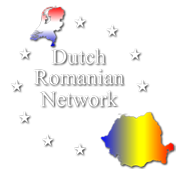Newsletter September 2022

Romania deserves to be in the Schengen area!!!
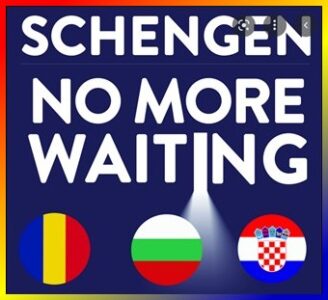 We as the board of Dutch Romanian Network, VNO NCW and the Netherlands Romanian Chamber of Commerce published a statement back in 2012 that Romania. The technical criteria for joining the Schengen area were already met in 2011, which was confirmed by the European Commission. However after that, the so-called and otherwise focused Cooperative and Verification Mechanism CVM) was improperly linked to it. The position of a number of countries including the Netherlands on Romania’s accession to Schengen was purely political in nature. As is well known, the European Council(heads of government of member states and their foreign ministers) still uses the now infamous veto or unanimity principle. It is out of date and adversely affects European clout. After all, nowadays it is impossible to explain that the European Commission recently invited Romania to join Schengen and yet a country would vote against (again for political reasons). It seems very undemocratic to us if a minority is going to rule the majority.
We as the board of Dutch Romanian Network, VNO NCW and the Netherlands Romanian Chamber of Commerce published a statement back in 2012 that Romania. The technical criteria for joining the Schengen area were already met in 2011, which was confirmed by the European Commission. However after that, the so-called and otherwise focused Cooperative and Verification Mechanism CVM) was improperly linked to it. The position of a number of countries including the Netherlands on Romania’s accession to Schengen was purely political in nature. As is well known, the European Council(heads of government of member states and their foreign ministers) still uses the now infamous veto or unanimity principle. It is out of date and adversely affects European clout. After all, nowadays it is impossible to explain that the European Commission recently invited Romania to join Schengen and yet a country would vote against (again for political reasons). It seems very undemocratic to us if a minority is going to rule the majority.
l’histoire se répète?
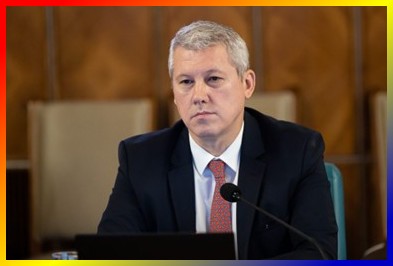 Romanian media recently reported(based on European sources)that Dutch Foreign Minister Wopke Hoekstra has expressed reservations about Romanian accession to Schengen, ignoring the countries Germany and France who do support it.
Romanian media recently reported(based on European sources)that Dutch Foreign Minister Wopke Hoekstra has expressed reservations about Romanian accession to Schengen, ignoring the countries Germany and France who do support it.
Because despite the fact that well-regarded Romanian Justice Minister Catalin Predoiu recently fulfilled the final conditions of the CVM, it cannot be true that Romania will again be put on hold without sound justification.
Moreover, this minister recently reported that all laws in the important field of judicial reform have been approved by the Romanian government and the entry into force will soon follow.
An entrepreneur talks about joining Schengen
According to DSV Road, the third-largest global provider of transportation and logistics services in Europe. The company estimates that joining Schengen will lead to an average increase in business of 20%.
The beneficial effects of Romania’s accession to the Schengen area will be felt immediately on the local transport and logistics market, DSV Road company executives believe. Thus, carriers’ transportation capacity will increase significantly once the borders are 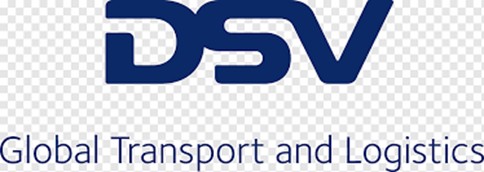 lifted. Fuel costs will also decrease, as the waiting time for trucks at the border, currently between 24 and 72 hours, will disappear, especially at the border crossings to Bulgaria (Calafat-Vidin and Giurgiu -Russia), but also towards Hungary .
lifted. Fuel costs will also decrease, as the waiting time for trucks at the border, currently between 24 and 72 hours, will disappear, especially at the border crossings to Bulgaria (Calafat-Vidin and Giurgiu -Russia), but also towards Hungary .
“Romania’s presence in the Schengen area will accelerate the development of the local economy. Thus, waiting times at the border will be significantly reduced, which has a cascading effect on the entire Romanian economy, which we all feel, both companies and individuals. Currently, exceedances of daily driving times recorded by drivers, higher fuel consumption during waiting times and delays in delivering goods to customers both penalize transporters and create problems in supply or in the execution of some production processes, as well as rising costs for end customers. Eliminating waiting times at the border with Hungary will also reduce transit times for all our groupage lines to Western Europe by at least 24 hours,” said Sergiu Iordache, Managing Director at DSV Road.

At the same time, Romania’s accession to the Schengen zone will increase external and internal competitiveness, optimize transport costs and increase local consumption. Other important effects of presence in Schengen include increased efficiency of truck use, as well as increased driver availability. In Europe, the shortage of drivers increased by more than 40% between 2020 and 2021, a study by the International Road Transport Union (IRU) shows, and with the removal of borders, an improvement of up to 10% will be achieved .
Lifting the borders will also make the European Union’s fleet more fluid. Currently there are blockades at the border, also because of the EU mobility package regulation, which requires drivers to return to their countries periodically, every few weeks.
“Of course, the effects of joining Schengen will also be felt in the DSV Road business. We estimate a 20% increase in turnover by streamlining transport costs and increasing the number of trips. Since DSV Road Romania manages large distribution contracts in Bulgaria, the biggest impact will be the reduction of time at the border. It is not an arbitrary example because the presence in Schengen will affect short trips, where the share of waiting time in total travel time is higher. We look forward to Romania’s entry into the Schengen area, a beneficial change for every carrier and company, which will have a significant impact on the local economy,” explains Mihai Teodorescu, Sergiu Iordache, Managing Director at DSV Road.
Also, the free movement of citizens in Schengen member states will increase the potential for citizens currently based in Europe to return to Romania, DSV Road representatives believe, seeking to attract team specialists who will settle in the country.
It is also essential that, due to the lack of borders and shorter transportation time, the amount of carbon emissions is significantly reduced, thus protecting the environment. Therefore, DSV Road has made significant strides in reducing pollution by offering customers the opportunity to choose sustainable transportation services.
According to the State Department, Romania has met the technical criteria to enter the Schengen area for more than 10 years, and by joining it will have one of the longest borders. In August 2022, Germany claimed that Romania meets all the requirements and will support our country to become a full member of the Schengen zone.
If we are all talking about the future of Europe, and if all the criteria are met, all countries have the same obligations and the same opportunities. So Romania’s place is in the Schengen area.
At the time of writing, the Dutch government has not yet taken a position, but given past experience, we believe a proactive stance on our part is warranted.
Sector Hydraulics
Van Oord protects and rehabilitates Romania’s Black Sea coastline
The Romanian branch of the Dutch company Van Oord Dredging and Marine Contractors BV, the same that also built the famous Palm Island in Dubai, announces the start of sand dredging works on Lot 5 (Eforie Sud) as part of the “Protection and Rehabilitation Project of the Romanian Black Sea Coast “in the Eforie area.”
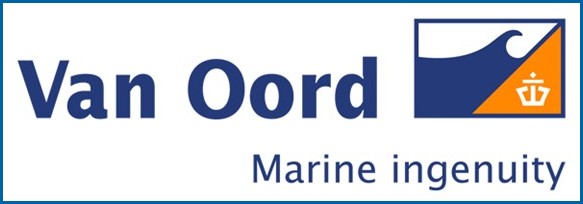
The project is based on a design and implementation contract signed with the Dobrogea Litoral Constanța Water Basin Administration (ABADL) and a total value of about 395 million lei, an amount financed from European funds. The sandblasting will take 12 weeks, with a completion date of January 2023.
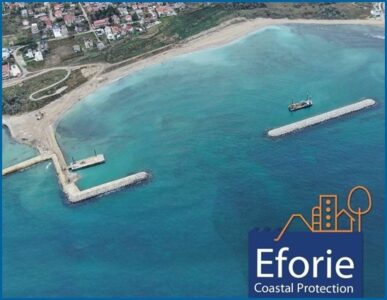 Upon completion of the works in Eforie, 50 new acres of beach and nearly 3 acres of biodiversity will be created. As part of the sandblasting works in the Eforie area, lies the self-repelling dredge “Utrecht” which dredges sand 10-12 km offshore and then pumps it onto land. A team of 50 people is continuously connected to the “Utrecht” so that by the end of the three months, the coastline in the Eforie area will be 50 hectares larger. To date, Van Oord has carried out similar works for four plots – three in the Constanța area and one in the Eforie Nord area (between 2013 and 2015), in the first phase of the project.
Upon completion of the works in Eforie, 50 new acres of beach and nearly 3 acres of biodiversity will be created. As part of the sandblasting works in the Eforie area, lies the self-repelling dredge “Utrecht” which dredges sand 10-12 km offshore and then pumps it onto land. A team of 50 people is continuously connected to the “Utrecht” so that by the end of the three months, the coastline in the Eforie area will be 50 hectares larger. To date, Van Oord has carried out similar works for four plots – three in the Constanța area and one in the Eforie Nord area (between 2013 and 2015), in the first phase of the project.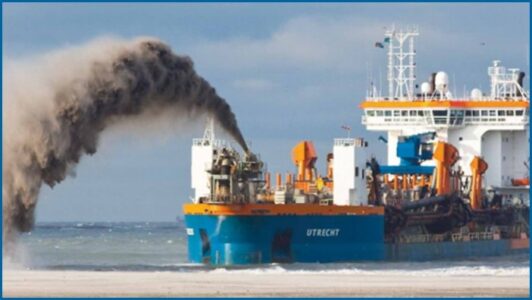
The sandblasting campaign (Lot 5 – Eforie Sud area and Eforie Nord – Eforie Sud cordon) is part of the second phase of the “Coastalerosion reduction (2014-2020)” project, within which, following the tenders held, Van Oord was declared the winner and will carry out the works for the Jupiter-Neptune area (Lot 8) and Balta Mangalia-Venus Aurora (Lot 9), respectively.
Sector Logistics and Transport
The new normal in E-Commerce
At the recently well-attended ECOM TEAM event, KLG Romania was asked the question “How do you build an intelligent delivery and fulfillment strategy for your store?”
 In the context of customers’ preferences in terms of delivery and investment, KLG Europe has developed two (business) ecosystems in recent years that meet the aforementioned and these are SIMPLIFY which emphasizes the e-fulfilment part. When orders arrive in web shops, Simplify automatically takes over the order and immediately starts preparation. For example, the process of choosing and packaging the products, as well as labeling and preparing them for delivery, is handled by Simplify, which then delivers the package(s) to the end customer.
In the context of customers’ preferences in terms of delivery and investment, KLG Europe has developed two (business) ecosystems in recent years that meet the aforementioned and these are SIMPLIFY which emphasizes the e-fulfilment part. When orders arrive in web shops, Simplify automatically takes over the order and immediately starts preparation. For example, the process of choosing and packaging the products, as well as labeling and preparing them for delivery, is handled by Simplify, which then delivers the package(s) to the end customer.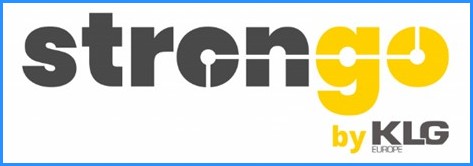
STRONGO is the national courier service that focuses on delivering oversized products (large appliances, furniture, plumbing, building materials, etc.) to the end user. The new e-commerce service rests on KLG Europe’s existing national network in Romania. We have nine strategically located hubs in the largest cities in the country. Through our network, we make delivery in as little as 24-48 hours possible throughout Romania.
Heisterkamp established Trailerrental in Romania this year
A family business for over a hundred years and therefore “on the road” for over a hundred years. What began in 1919 in the Netherlands with a horse and cart has grown into an international company with a unique concept for the entire transport sector.
 Since 2015, Heisterkamp Transport has also been based in Romania, first only in Cluj and then also an office in Iasi. The company has experienced nice growth during these years in Romania. Since 2022, Heisterkamp Trailerrental has also been based in Romania to serve the Romanian market even better.
Since 2015, Heisterkamp Transport has also been based in Romania, first only in Cluj and then also an office in Iasi. The company has experienced nice growth during these years in Romania. Since 2022, Heisterkamp Trailerrental has also been based in Romania to serve the Romanian market even better.
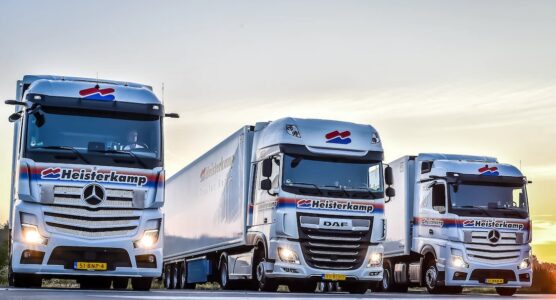 With the unique concept of Heisterkamp offers customers everything in the field of transport: organizing transports, renting, leasing or buying/selling trucks and trailers and maintenance of all large commercial vehicles also buses.
With the unique concept of Heisterkamp offers customers everything in the field of transport: organizing transports, renting, leasing or buying/selling trucks and trailers and maintenance of all large commercial vehicles also buses.
More about Heisterkamp can be found at www.heisterkamp.eu
Automotive Sector
Car production in Mioveni and Craiova is increasing systematically.
Dacia and Ford car production in Romania continued to increase during the summer compared to the previous year, although both plants are affected by the semiconductor crisis. The annualized pace shows a possible break from the 2019 record.
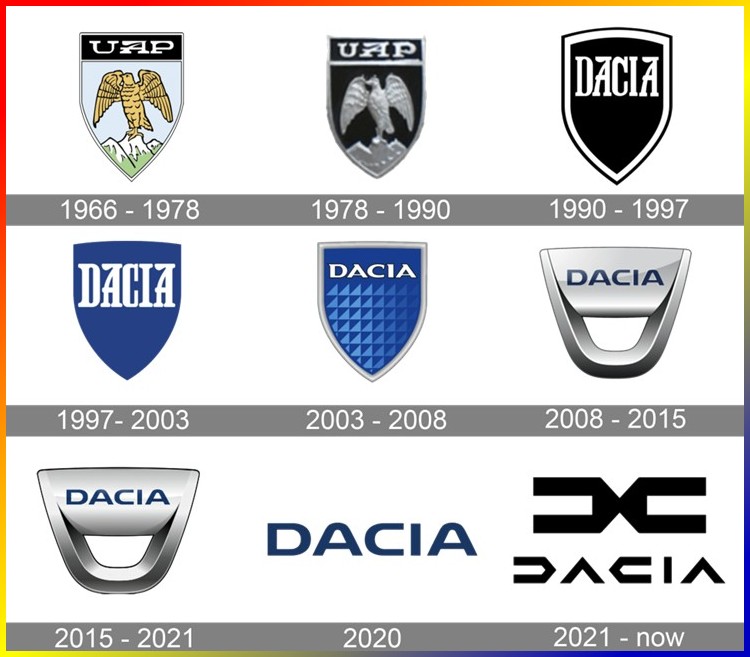
The two summer months, July and August, caused an increase of nearly 25% in car production in Mioveni at the Dacia plant, and in Craiova, at the Ford plant, according to ACAROM data, showing that the total volume reached 61,634 vehicles. This period is reported on both months because August is the month of overhaul(s) in the factories and production volume is very low. The value reported by the two plants is higher by more than 12,000 vehicles, increasing the annual progress of passenger car production in Romania. Both brands posted strong increases, with a produced volume of 34,153 vehicles produced in Mioveni, 26% more than last year, and 27,481 vehicles produced in Craiova, 23% more.
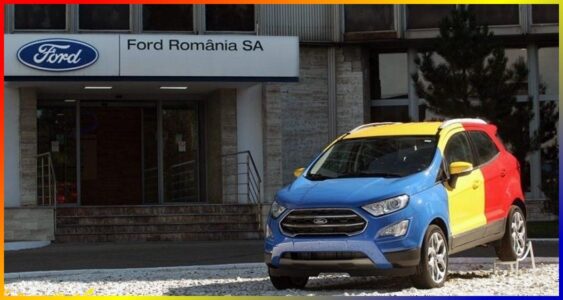 Mercedes and Rivian, with George Soros as shareholder, are preparing a huge investment, Romania is taken into account After eight months, passenger car production in Romania reached 330,393 cars, the highest value ever measured for the January-August period, with an advance of more than 15 percent for each of the plants. At Dacia, 199,503 cars were assembled (an increase of 27,000 vehicles), and at Ford, 130,890 cars were produced (by more than 17,000 vehicles). At that time, average monthly production at the two plants reached 41,299 cars, equivalent to 495,500 cars year-on-year, higher than the 2019 record, when just over 490,000 vehicles were produced.
Mercedes and Rivian, with George Soros as shareholder, are preparing a huge investment, Romania is taken into account After eight months, passenger car production in Romania reached 330,393 cars, the highest value ever measured for the January-August period, with an advance of more than 15 percent for each of the plants. At Dacia, 199,503 cars were assembled (an increase of 27,000 vehicles), and at Ford, 130,890 cars were produced (by more than 17,000 vehicles). At that time, average monthly production at the two plants reached 41,299 cars, equivalent to 495,500 cars year-on-year, higher than the 2019 record, when just over 490,000 vehicles were produced.
ATP Group adds commercial property to Exodus division
Romanian automotive parts manufacturer ATP Exodus expands its range of products and services and becomes the new systems and body supplier for ATP Trucks.
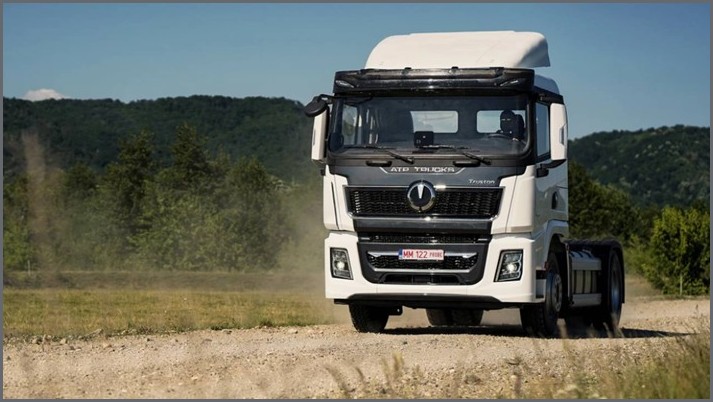
Group of companies with 100% Romanian capital, ATP Group announced the repositioning of the ATP Exodus division. From September 2022, the automotive parts manufacturing and supply company will become the main manufacturer of systems and bodies for ATP Trucks products while maintaining its role as a distributor of parts and equipment for all of its own brands.
 The Baia Mare Group management believe that in this way the entire logistics business process of the ATP Group will be facilitated, long-term costs will be streamlined and operations will be more easily managed.
The Baia Mare Group management believe that in this way the entire logistics business process of the ATP Group will be facilitated, long-term costs will be streamlined and operations will be more easily managed.
Since 2019, the group has focused on developing the car production segment. Thus, a new Romanian car brand, ATP Trucks, was born and the Truston 430 CP 8×4 dump trucks and concrete mixers, 100% assembled in Baia Mare, began to gain market share. Later, the Truston 480 hp 4×2 tractor and the electric bus ATP Bus were added to this portfolio.By redefining its business activities, the group now targets specialized construction companies in Romania with an offer that includes tippers and 8×4 concrete mixers, 4×2 tractors, service and spare parts for them, construction machinery, concrete batching plants and
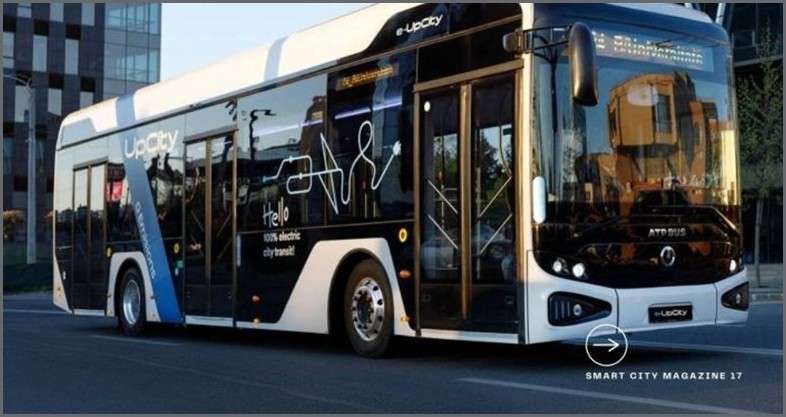
ATP Group business lines today integrate ATP Trucks – truck manufacturing, ATP Bus – bus manufacturing, ATP Motors – car dealer, Hefton – construction machinery and equipment, ATP Exodus – superstructure manufacturing and parts distribution.
IT Sector
New NetRom Campus in Craiova, Romania
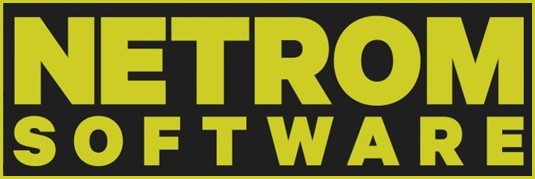 NetRom Software was founded in 1999 and over the past 23 years has grown into a mature digital product engineering organization with nearly 500 employees (95% of whom are computer science graduates), 4 offices and more than 70 customers in 8 countries. We spoke to CEO, founder and board member of the Dutch Romanian Network Han in ‘t Veld about NetRom Software, Romania and how everyone can come visit the new campus in Craiova.
NetRom Software was founded in 1999 and over the past 23 years has grown into a mature digital product engineering organization with nearly 500 employees (95% of whom are computer science graduates), 4 offices and more than 70 customers in 8 countries. We spoke to CEO, founder and board member of the Dutch Romanian Network Han in ‘t Veld about NetRom Software, Romania and how everyone can come visit the new campus in Craiova.
The history of NetRom Software
NetRom started in 1999 in Romania with import and export organization, which was very soon replaced for a software organization. Only 6 years later we opened our first (sales) office in the Netherlands. Thinking back to those early years, doing business in Romania was of a very different order than it is today.
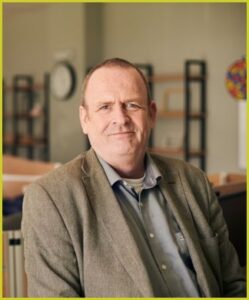 Entrepreneurship in Romania was really pioneering back then! Many amenities that are taken for granted now were not available then: banks were open only 2.5 hours a day and you sometimes stood at the counter for hours to arrange things. What was there then and has been there all along: Intelligent, enthusiastic and committed employees who helped bring NetRom to where we are today.
Entrepreneurship in Romania was really pioneering back then! Many amenities that are taken for granted now were not available then: banks were open only 2.5 hours a day and you sometimes stood at the counter for hours to arrange things. What was there then and has been there all along: Intelligent, enthusiastic and committed employees who helped bring NetRom to where we are today.
15 of the 20 developers from the very beginning are still involved with NetRom and have since moved on to management positions. In addition, we have more than 100 employees who have been with us for more than 10 years. They are the heart of NetRom! The average Dutchman does not connect concepts like Loyalty, work ethic and commitment with Romania, but fortunately our mostly Dutch clients now know better.
Business climate
The favorable developments of the business environment in Romania in general, and the maturing of the IT industry specifically, have been the breeding ground for NetRom’s growth. Long-term goals & sustainable relationships with all of our stakeholders have always been at the forefront of this, and we are pursuing this way of doing business in the future as well.
The new NetRom campus is an important component of this. It’s simple: if you want to serve clients with state-of-the-art software product engineering, you’ll have to make sure you bring in and keep local IT talent. After all, knowledge and skill walks on 2 legs. In 2013 we began creating conditions that facilitated this, but the seeds of building our own campus (with our own company restaurant & free 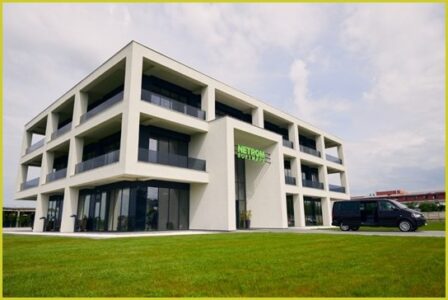 meals, employee-only car wash, sports facilities and the NetRom Academy) were planted much earlier.
meals, employee-only car wash, sports facilities and the NetRom Academy) were planted much earlier.
We are taking advantage of that now. Many competitor companies are also inventing all kinds of bells and whistles for their staffs due to the extremely tight labor market over the past few years. That’s a little late. At NetRom, the principle of Employee first = Customer first is almost literally in our DNA.
Virtual tour
We would like to invite you to visit the NetRom Campus and see what kind of business you can build in Romania. You can now take a virtual tour where you can have coffee with Han, see the NetRom “Wall of Fame,” or just walk around the modern buildings.
The virtual tour can be viewed Netrom – Campus VR Tour (windows.net) on the computer, but even more fun is to do it through VR glasses.
Would you like these sent to you? Then send an email to marius@netrom.nl.
Campus Overview
- 30.000m2 area
- 10.000m2 of office space (of which 3900m2 already built)
- Car wash, in-house company restaurant, NetRom Academy
- Total investment: 10 million euros
Sector Agri Food
Dutch investor puts its agricultural group on Bucharest stock exchange
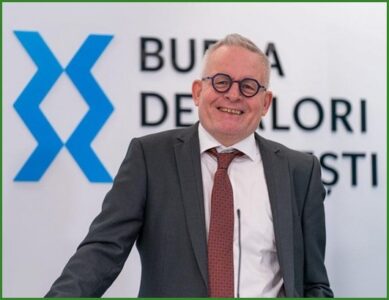 DN Agrar, a group of 12 companies active in the agricultural sector in central Transylvania, debuted on the Bucharest Stock Exchange on Feb. 2 (BSE) The group, founded and controlled by Dutch investor Jan G. de Boer, raised RON 24.7 million ( EUR 5 mln) in a private placement of shares executed in July 2021.
DN Agrar, a group of 12 companies active in the agricultural sector in central Transylvania, debuted on the Bucharest Stock Exchange on Feb. 2 (BSE) The group, founded and controlled by Dutch investor Jan G. de Boer, raised RON 24.7 million ( EUR 5 mln) in a private placement of shares executed in July 2021.
DN Agrar shares, traded under the ticker DN , closed the first trading day on BSE’s AeRO market at 2.1 RON, which is 16% higher than the price paid by investors participating in last year’s private placement (1.81 RON per share). The group’s market capitalization reached RON 111 mln (EUR 22.4 mln).
“We want DN Agrar Group’s listing on the AeRO market of Bucharest Stock Exchange to mark the company’s entry into the next stage of development. We are convinced that the financing instruments offered by the capital market will be beneficial to our business structure. We are convinced that the ambitious goals we have set for ourselves will be achieved and that our confidence in the future of agribusiness in Romania will be rewarded,” said Jan G. de Boer, CEO and Chairman of the Board of Directors of DN Agrar Group. 00:05 / 01:31
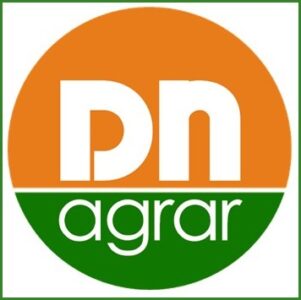 DN Agrar Group includes 11 companies operating in areas such as animal husbandry, namely breeding dairy cattle, field crop production, agricultural services, logistics, transportation, consulting and management services and tourism. In addition, the group recently acquired a new farm, Lacto Agrar, with funds obtained from the private placement last July.
DN Agrar Group includes 11 companies operating in areas such as animal husbandry, namely breeding dairy cattle, field crop production, agricultural services, logistics, transportation, consulting and management services and tourism. In addition, the group recently acquired a new farm, Lacto Agrar, with funds obtained from the private placement last July.
In the field of vegetable cultivation, the group’s farms, together with the Lacto Agrar farm, currently cultivate more than 3,000 hectares of farmland, located in the provinces of Alba and Hunedoara. At the same time, the group’s farms had more than 3,300 dairy cows, producing 75,300 liters of milk per day. At the end of 2020, the group’s companies employed 162 people.
“DN Agrar Group is a long-awaited venture by investors and we are happy that with its presence on the exchange, both the representation of the agricultural sector on the capital market and the investment diversification opportunities for investors will increase. Romania has significant potential in the agricultural sector and the capital market is a solution for all farmers in the country who need capital for development,” said Radu Hanga, President of the Bucharest Stock Exchange .
(Source photo: BVB)
Number of cows decreased from last year
The number of cattle is decreasing (source: piatafinanciara.ro) . The National Institute of Statistics (INS) published data showing that livestock numbers in Romania are declining compared to last year.
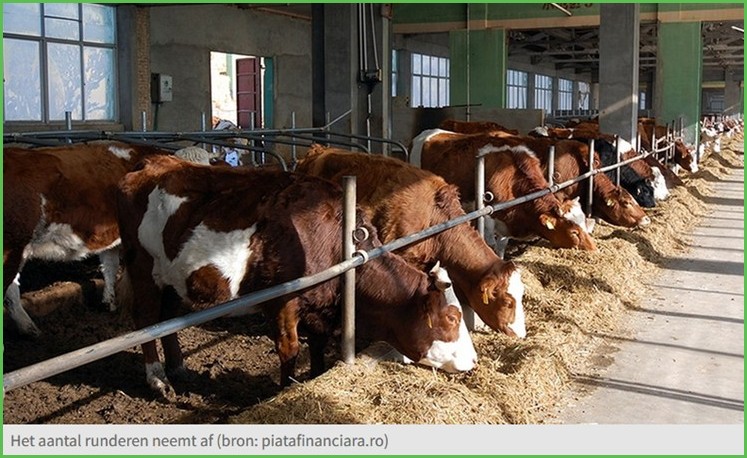
Existing cattle herds as of June 1, 2022 decreased overall by 0.7% to 1,852,262 head compared to June 1, 2021, and decreased by 0.9% in the female herd to 1,220,395 head compared to the same period last year.
Thus, total herds recorded a decrease of 12,315 head in 2022 compared to 2021, of which the decrease in the female herd was 11,473.
Cattle herds that existed on June 1, 2022, decreased 0.7% overall and 0.9% in the female herd, compared with June 1, 2021, INS Information reports.
Peat numbers and queen numbers existing on June 1, 2022, compared with June 1, 2021. Table showing existing cattle and queen herds on June 1, 2022 vs. June 1, 2021 (source: insse.ro).
According to the INS, analyzing the distribution among development regions, it appears that the share of existing cattle on June 1, 2022, compared to the same date in 2021, increased in the Center (+0.3 percentage points), Northeast, Regions West and North -West (+0.1 pp.), decreased in the South-West Oltenia (-0.3 pp.), South Muntenia (-0.2 pp.) and South-East (-0.1 pp.) regions, and remained constant in the Bucharest-Ilfov region.
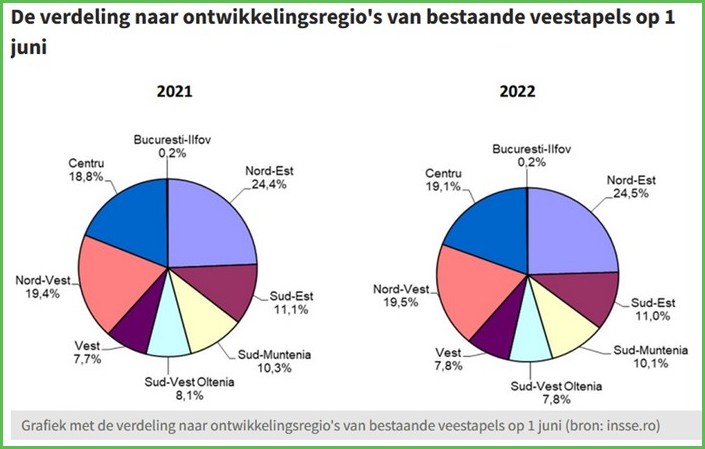
First information on Romanian corn production this year
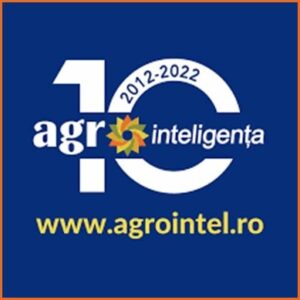 Farmers have begun harvesting the corn crop and this year’s production will cover domestic demand, but “it will be available for export,” Agriculture Minister Petre Daea said while reporting to the prime minister. “Of course we are at the beginning of the corn harvest, we are only at 7%, the output varies from country to country. This crop is more affected [door droogte] and we will not be able to draw a conclusion yet. However, we can ensure our domestic consumption, but we will be less present with this grain (corn) for export, knowing that Romania is one of the countries with potential for grain production in the
Farmers have begun harvesting the corn crop and this year’s production will cover domestic demand, but “it will be available for export,” Agriculture Minister Petre Daea said while reporting to the prime minister. “Of course we are at the beginning of the corn harvest, we are only at 7%, the output varies from country to country. This crop is more affected [door droogte] and we will not be able to draw a conclusion yet. However, we can ensure our domestic consumption, but we will be less present with this grain (corn) for export, knowing that Romania is one of the countries with potential for grain production in the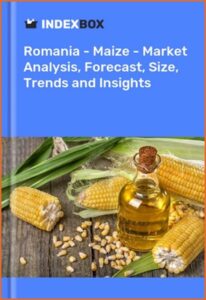 overall, and of course with a substantial contribution for exports in the Black Sea basin, where we compete with the two flag countries, Russia and Ukraine,” the minister said. Corn 9 million tons of wheat – stored for domestic consumption and exports Petre Daea also stressed that in the case of wheat, 9 million tons were stored, an amount that covers both domestic consumption and exports. “Right now we are covered in terms of cereal crops and I say this because to date we have stored 9 million tons of wheat, which ensures domestic consumption and creates availability for export,” the minister said. He also reported the situation for sunflower, a crop that farmers have harvested at a rate of 45 percent. “Farmers have also switched to harvesting spring crops, mainly sunflower, which is currently 45 percent of the field collected and stored,” he said. the required amount of sunflower seeds to ensure through processing domestic demand and some availability for export,” he added. The Ministry of Agriculture and Rural Development (MADR) reported that as of Sept. 7, the total area notified as affected by drought is 504,018 hectares, so far notified by 37 (out of 41) provinces. The main autumn crops affected: – barley, spelt, oats, rye 29,518 ha – wheat, triticale: 189,265 ha – rapeseed: 26,719 ha The main spring crops affected: – corn 149,101 ha – sunflower: 73,124 ha – soybeans 11,629 ha – fodder crops 11,613 ha
overall, and of course with a substantial contribution for exports in the Black Sea basin, where we compete with the two flag countries, Russia and Ukraine,” the minister said. Corn 9 million tons of wheat – stored for domestic consumption and exports Petre Daea also stressed that in the case of wheat, 9 million tons were stored, an amount that covers both domestic consumption and exports. “Right now we are covered in terms of cereal crops and I say this because to date we have stored 9 million tons of wheat, which ensures domestic consumption and creates availability for export,” the minister said. He also reported the situation for sunflower, a crop that farmers have harvested at a rate of 45 percent. “Farmers have also switched to harvesting spring crops, mainly sunflower, which is currently 45 percent of the field collected and stored,” he said. the required amount of sunflower seeds to ensure through processing domestic demand and some availability for export,” he added. The Ministry of Agriculture and Rural Development (MADR) reported that as of Sept. 7, the total area notified as affected by drought is 504,018 hectares, so far notified by 37 (out of 41) provinces. The main autumn crops affected: – barley, spelt, oats, rye 29,518 ha – wheat, triticale: 189,265 ha – rapeseed: 26,719 ha The main spring crops affected: – corn 149,101 ha – sunflower: 73,124 ha – soybeans 11,629 ha – fodder crops 11,613 ha
Source: www.agrointel.ro, September 2022
Cobor’s farm reintroduces Steppe Sura, a species of cattle that is nearly extinct in Romania
Cobor Biodiversity Farm, located in rural Transylvania, in a settlement first confirmed in 1206, stands out for its green, nature-friendly business model and project to reintroduce the Steppe Sura. Steppe Sura is a semi-wild cattle species that lives outside 365 days.
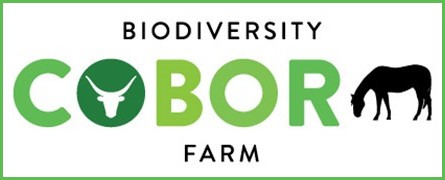 “In recent years, we have noticed an increasing trend of people paying more attention to quality and the story behind a product. At Cobor Biodiversity Farm, we have them all: the story of a pioneering environmental project to protect the Făgăraș Mountains, the story of a 13th-century village, in demographic and economic decline, but revived by the farm project, by creating 15 places of work. We have the story of the Steppe Sura, a historical breed, almost extinct in Romania, which has been completing the landscape of the village for more than 4 years and will soon surprise the taste buds of beef lovers with a good product from Transylvania, missing from the market. We have an approved slaughter point within the Cobor Biodiversity Farm, we comply with DSVSA regulations, but we do not industrialize the process and slaughter is done through an almost traditional cutting procedure.
“In recent years, we have noticed an increasing trend of people paying more attention to quality and the story behind a product. At Cobor Biodiversity Farm, we have them all: the story of a pioneering environmental project to protect the Făgăraș Mountains, the story of a 13th-century village, in demographic and economic decline, but revived by the farm project, by creating 15 places of work. We have the story of the Steppe Sura, a historical breed, almost extinct in Romania, which has been completing the landscape of the village for more than 4 years and will soon surprise the taste buds of beef lovers with a good product from Transylvania, missing from the market. We have an approved slaughter point within the Cobor Biodiversity Farm, we comply with DSVSA regulations, but we do not industrialize the process and slaughter is done through an almost traditional cutting procedure.

We will market a small quantity of Steppe Sura meat in October, directly from the farm, with delivery to restaurants, grocers or other interested parties,” explains István Szabó, green business manager Conservation Carpathia Foundation .
Steppe surras contribute to traditional management of the High Nature Value (HNV) grasslands around the village. Thus, the natural richness of this area is maintained through the use of sustainable land use systems, with grazing cows considered most appropriate for maintaining grassland biodiversity.
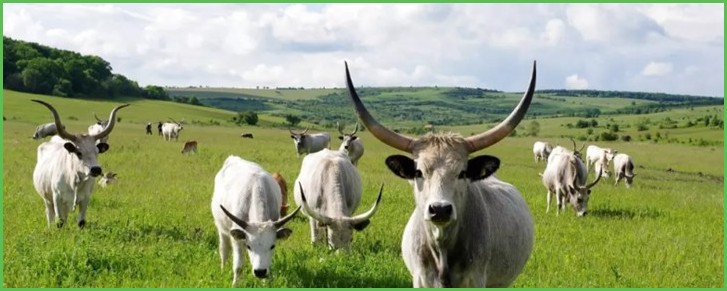
What is the Steppe Sura
Between the 12th and 17th centuries, these cows played an important role in the daily life of farmers. Very strong, the Sures were used for pulling carts and plows as well as for milk production (8-10 l/day) and for meat.
They are highly resistant, can stay outside all winter and are immune to many diseases. This made the breed very valuable in the Middle Ages . Archival documents speak of transporting more than 1,000 cattle on foot from Transylvania to the markets of Vienna , at a time when cattle had been driven out of Central Europe by disease.
Sectors Culture, History, Tourism and Imaging
Timisoara European Capital of Culture in 2023
Since 1985, one city has carried this title each year; since 2004, it has been several countries each year that may provide a candidate. Its aim is to highlight the richness, diversity and common characteristics of European cultures and contribute to the citizens of the European Union getting to know each other better.

Timiosara
 The theme of Light has been spotted as the central idea to transform the city through culture and participation. Therefore, the slogan Shine your Light – Light Up Your City is about their values to spread in Europe for a broad-minded, visionary attitude.
The theme of Light has been spotted as the central idea to transform the city through culture and participation. Therefore, the slogan Shine your Light – Light Up Your City is about their values to spread in Europe for a broad-minded, visionary attitude.
Sometimes radical change begins on a street corner. In 1884, Timisoara was the first city in continental Europe with electric street lighting. In 1989, the sparks of the revolution against the Ceausescu regime ignited in the streets of Timisoara….
Throughout its existence, Timisoara has been a city of sparks that have stimulated transcontinental transformations. It was the soul and promoter of the region, the bridge between the Austro-Hungarian Empire and Southeastern Europe. In difficult times, citizens united and inspired others to do the same.
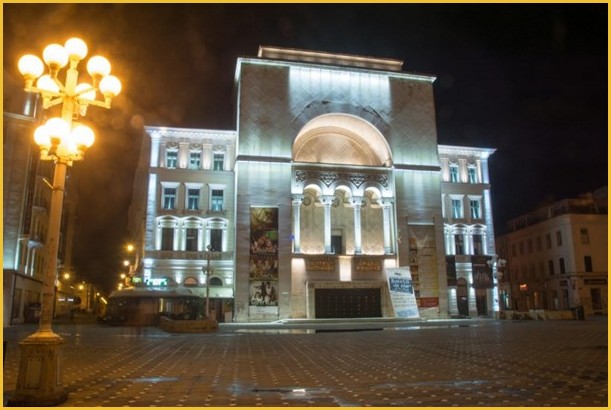
Through its diaspora spread across the continent, Timisoara communicated with other Europeans who experienced similar challenges from different perspectives. Our ambition is to harness and develop this potential within the European Capital of Culture 2023.
Opening ceremony with Dutch touch
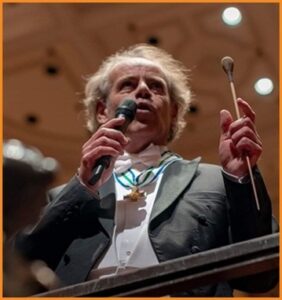 At the opening ceremony, the National Opera with orchestra, choir and well-known soloists will play a prominent role and this will be led by Dutch(Limburg) conductor Raymond Janssen working under the name of Cadenza European Arts Productions. It will come as no surprise to anyone because for over a decade he has been providing packed halls in Holland with the Romanian musicians from Timisoara. In 2018 from the hands of the Romanian ambassador an award from the President of Romania.
At the opening ceremony, the National Opera with orchestra, choir and well-known soloists will play a prominent role and this will be led by Dutch(Limburg) conductor Raymond Janssen working under the name of Cadenza European Arts Productions. It will come as no surprise to anyone because for over a decade he has been providing packed halls in Holland with the Romanian musicians from Timisoara. In 2018 from the hands of the Romanian ambassador an award from the President of Romania.
He received the tribute in recognition of his promotion of Romanian culture.
With the same cast and program as at the opening in Timisoara, an Opera Gala will be performed at the Royal Concertgebouw in Amsterdam on February 25 and 26, 2023.
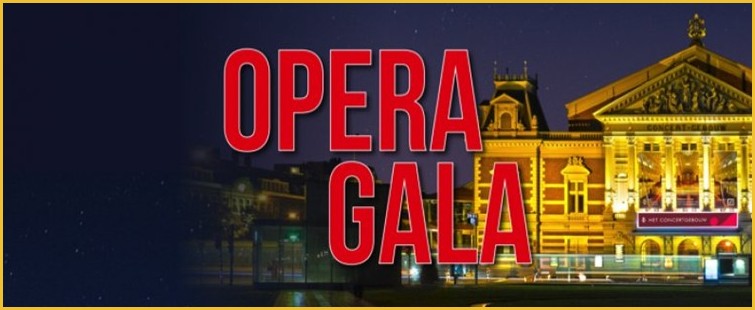
King Charles III is descendant of Vlad Tepes(Dracula)
The new British king confirms the aforementioned lineage, but the image deserves correction. However, the king refers to the Romanian monarch of Wallachia(a part of today’s Romania) Prince Vlad Tepes(15th century)was surrounded by enemies, including the Hungarians, the Ottomans, his younger brother and the Wallachian nobility. Vlad took extremely cruel measures to instill fear in those who opposed him. He earned his nickname by impaling his enemies on poles. However among the Romanians, he has a heroic status because he protected the Romanian people from the advancing Ottomans.
It has often been thought that Ireland’s Bram Stoker based his title character of Dracula on Vlad. Although Stoker’s notes for the novel do contain mentions of “Dracula,” the historical record from which the notes were taken mentions only the name , not the deeds of which the bearer was known. Some scholars have speculated that Stoker’s conversations with a noted historian, Hermann Bamburger, may have given him information about Vlad’s violent nature, although there is no concrete evidence to support that theory.
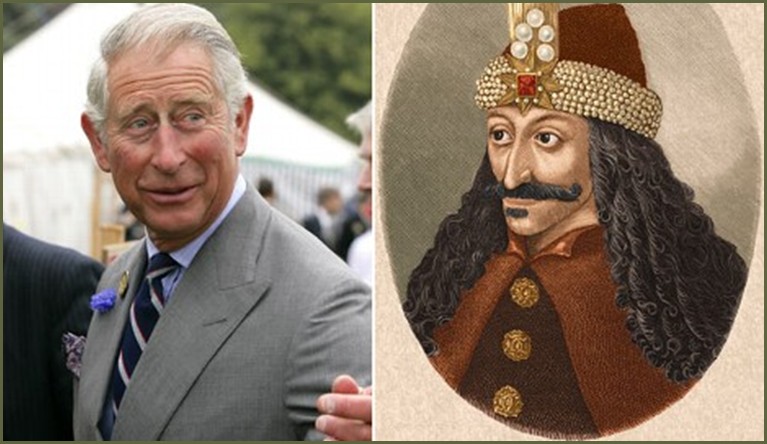
Mihai Eminescu Trust(MET)
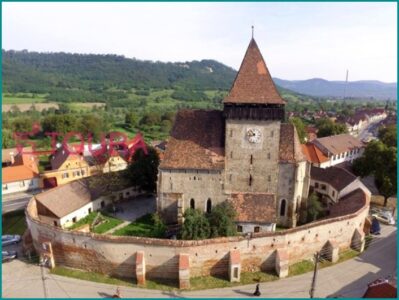 The current king and the until recently named Prince of Wales has been spending his vacations in his house/farm in Viscri(north of Brasov) for more than a decade and feels very close to Transylvania or Zevenburgen and through his foundation Mihai Eminescu Trust (MET) established in 1987 in London he engages in a variety of activities .The name of the Foundation (referring to Romania’s most prominent poet of the 20th century ) relates to the original target group of the organization : opening Romanian intellectuals (philosophers, writers, artists) to Western European universities (especially Oxford and Cambridge) and to the influential personalities of the Western world.
The current king and the until recently named Prince of Wales has been spending his vacations in his house/farm in Viscri(north of Brasov) for more than a decade and feels very close to Transylvania or Zevenburgen and through his foundation Mihai Eminescu Trust (MET) established in 1987 in London he engages in a variety of activities .The name of the Foundation (referring to Romania’s most prominent poet of the 20th century ) relates to the original target group of the organization : opening Romanian intellectuals (philosophers, writers, artists) to Western European universities (especially Oxford and Cambridge) and to the influential personalities of the Western world.
Restoration of fortified weather churches
One of many examples is that he supported the Dutch initiative of Opération Villages Roumains-Netherlands who restored a dilapidated fortified weather church in Axente Sever(Frauendorf) located between Sibiu and Medias with a small associated museum. Throughout history, the church has been the central element of the village – a place of worship and a last refuge; the last line of defense against outside invasions. Instead of castles, Transylvania had churches; fortified churches that helped them protect their land. By investing in the renovation of the churches, they are paying tribute to the sacrifices of the past. And focusing these churches – the beautiful and prominent part of the village – helps sustain both tourism and the region itself.
The development of local, regional and international tourism
A fundamental question: once the village is restored to its traditional beauty, what do we do? Well, we invite others to see our work.  We call on travelers to enjoy the beauty of our surroundings; we welcome them to our traditional homes. As a trust, the MET emphasizes responsible tourism. Tourism exposes newcomers to the beauty of our land; profits from tourism are then used to continue the restoration of the old villages, preserving an irreplaceable part of the world .
We call on travelers to enjoy the beauty of our surroundings; we welcome them to our traditional homes. As a trust, the MET emphasizes responsible tourism. Tourism exposes newcomers to the beauty of our land; profits from tourism are then used to continue the restoration of the old villages, preserving an irreplaceable part of the world .
Prince Charles played an important guest role in the British Travel Channel’s now widely viewed documentary “Wild Carpathia,” which can be seen on the Internet and on several Youtube movies. Highly recommended and it will without a trace of doubt change your perception of Transylvania in a positive way! The editors of this newsletter dare put their hand in the fire for that without batting an eye!
Socio-Economic Demographic Trends
Demographic time bomb is ticking
On January 1, 2022, the population was 19,038,098 people, a decrease of 163,600 people compared to January 1, 2021 / The phenomenon of an aging population is increasing / Emigration, the second main cause of the country’s population decline.” The main cause of this decline is the negative natural increase (the number of deceased people that exceeds the number of live births by 156,000) people); this value is corrected by the number of births and deaths reported late to the offices of civil registration. The urban population, as well as the female population, are in the majority (54.0% and 51.1%, respectively), INS data show.
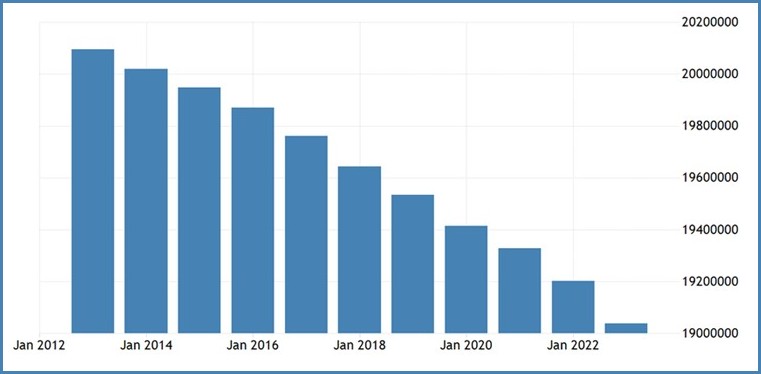 Aging
Aging
“The phenomenon of aging continues to increase (rising to 123.6 elderly per 100 young people under 15), the gap between the elderly population aged 65 and older and the young population aged 0-14 reached 709,000 people (3,708,000 compared to 2,999,000 people ), up from 678,000 people on Jan. 1, 2021. The demographic dependency ratio increased from 54 to 54.4 youths and seniors per 100 adults,” the INS said. The balance of long-term temporary international migration was negative (-16,100 people).On Jan. 1, 2022, the population of the urban area was 10,281,000 people, a decrease of 0.1% from Jan. 1, 2021. “The demographic aging process deepened compared to Jan. 1, 2021, with the proportion of elderly (65 years and older) increasing. The aging index increased from 122.4 (on Jan. 1, 2021) to 123.6 elderly per 100 young people (on Jan. 1, 2022),” INS data show.The share of the population aged 0-14 years in the total population stagnated at 15.8%, while the share of the population aged 65 years and older in the total population registered an increase of 0.2 percentage points (from 19.3% in 2021 to 19.5% in Jan. 1, 2022). Thus, the demographic dependency ratio increased from 54 (on Jan. 1, 2021) to 54.4 youths and seniors per 100 adults (on Jan. 1, 2022).
Emigration
“Romania remains a country of emigration, the phenomenon of emigration is the second main cause of the reduction of the country’s population. The balance of international migration in 2021 was negative, the number of emigrants exceeded the number of immigrants by just over 16,000 people. In 2021, men emigrated more often than women (50.2%). And among immigrants, men were in the majority (54.7%),” reports the INS.
Eurozone economy growth unexpectedly strong, Netherlands leads EU
The euro zone economy grew more strongly in the second quarter than previously thought. According to a final figure from European statistics agency Eurostat, growth came in at 0.8 percent compared to a quarter earlier.
An earlier estimate reported an advance of 0.6 percent. According to Eurostat, the Netherlands led within the European Union member states in terms of economic growth.
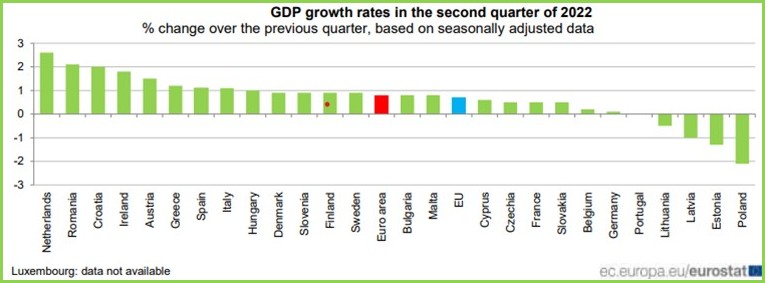
In the first quarter of this year, the euro area economy advanced by 0.7 percent. The EU-wide economy showed a plus of 0.7 percent in the second quarter, following growth of 0.8 percent in the previous period.
According to Eurostat, the economy was helped mainly by higher consumer spending. However, an increasing number of economists do fear that the economy will fall into recession due to high inflation and sharply increased energy prices. The inflation crisis is putting severe pressure on the purchasing power of households, possibly causing more and more people to reach out to save money.
European Central Bank (ECB) to raise interest rates further to address inflation. Possibly it will involve a three-quarter percentage point increase in interest rates. In July, the ECB raised interest rates by half a percentage point. The central bank also releases new forecasts for the economy and inflation.
However, an increasing number of economists do fear that the economy will fall into recession due to high inflation and sharply increased energy prices.
However economists cannot predict the future and their divergent views should be taken with a large grain of salt. Especially in uncertain times, we must be careful not to become selffulfilling prophecies.
So as far as we are concerned: Never waste a good crisis!
World Bank calculated the performance and potential of Romanian cities
The “hierarchy of cities” in terms of the attractiveness index shows that the most attractive cities continue to be Bucharest, Cluj-Napoca, Iasi, Timisoara, Craiova, Constanța, Galați, Brasov, Oradea and Ploiesti, according to a World Bank report.
In most cases, a positive correlation can be observed between the attractiveness index and the amount of foreign capital attracted by a specific city (Brașov, for example, is rated 8th in terms of both the attractiveness index and the attractiveness of foreign capital), the paper shows.
Proximity to the western border offers clear advantages, as the western area is generally preferred by investors due to its proximity to western European markets. Thus, geographical location is clearly an attraction factor, especially for manufacturing centers.In Romania, domestic investment, although recovering somewhat compared to previous years, remains insufficient to sustain the economy.
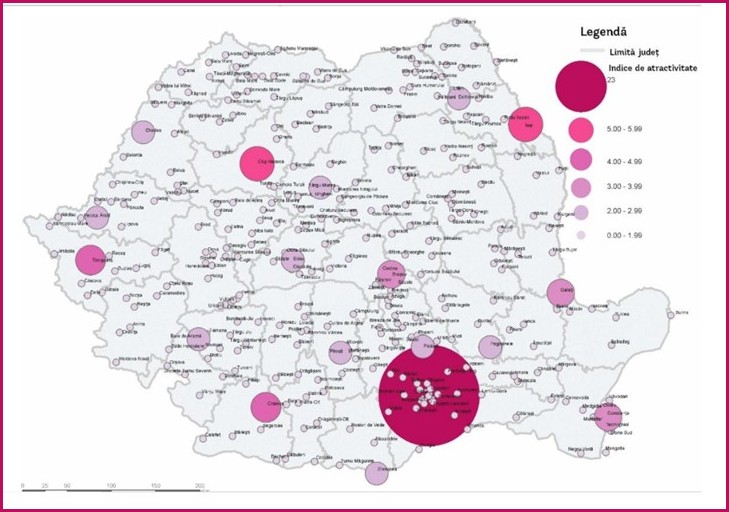
However, the current economic crisis presents a real opportunity that Romania should take advantage of. The biggest opportunity for Romania and its cities is the reshoring phenomenon (current plans by European companies to reduce or repatriate production value chains/facilities, given the increasingly problematic distances and commercial tensions that have escalated as a result of the pandemic).
Therefore, production capacities withdrawn from other continents should be moved to Romania if we can win competition with other states in the region and demonstrate our competitive advantages. Romania is highly cost competitive and industrial production has increased significantly in recent years. These characteristics can make the country a magnet for investment, especially in the manufacturing area.
In the future, the connection between Europe and China is expected to change; many key manufacturing capacities of European companies operating in Asia will move to Europe to better control the supply chain. Romania and other CEE countries are particularly attractive to the labor market, with salaries lower than those in Western Europe, in some cases – and especially in recent years – comparable to those in China.
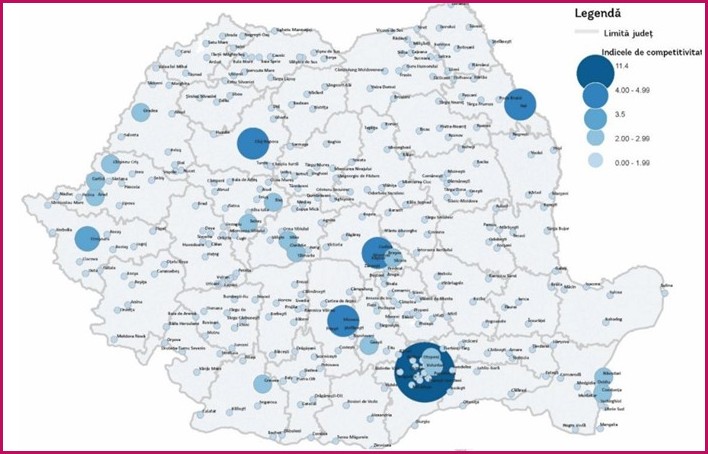
For example, labor costs in the manufacturing sector in Germany are six times higher than in Romania. Each Romanian city should develop its own economic profile to specialize and attract the right capital according to the locally developed growth vision.
Competitiveness is often described as the external validation of urban economies in the age of globalization. Usually places can be the equivalent of companies, competing for talent and market share in a global economy.
Therefore, competitiveness and attractiveness are important indicators for analyzing the economic performance of cities and their ability to attract mobile capital, knowledge and innovative companies.Two indices have been developed to evolve the performance of Romanian cities: the competitiveness index (focusing on current performance) and the attractiveness index (focusing on potential performance)
It is no surprise that Bucharest is Romania’s most competitive city, the largest city currently competing on par in terms of productivity with other major cities in the EU.
It is followed by other developed cities (Cluj-Napoca, Iasi, Timisoara, etc.), Which are also important economic centers. Competitive secondary cities are essential for stronger regional performance because they propagate growth and development in neighboring places.
The data showed a positive correlation between economic performance expressed as GNI/capita and the competitiveness index, meaning that a competitive city really does offer better opportunities to its citizens.
Other cities (Ghimbav, Mioveni, Năvodari, Găesti, Otopeni, etc.) benefit greatly from their proximity to urban growth poles and this is reflected in the level of competition. In addition, it was observed that the value of the index is correlated with a city’s level of specialization (e.g., Ghimbav specializes in aerospace, Mioveni specializes in automotive – both have high values of competitiveness content index).
In short, this means that a higher degree of specialization within a city creates the starting point for higher competitiveness. However, highly specialized cities are sensitive to sudden economic changes. So whenever possible, a balance between specialization and diversification should be considered at the local level, the World Bank also recommends.
Geopolitical developments
Erdogan: Russia must return Ukraine’s occupied territories if it wants lasting peace
Turkey, a member of the North Atlantic Treaty Organization (NATO), continues to maintain close relations with both Kiev and Moscow, and recently helped broker a deal to resume Ukrainian grain exports.
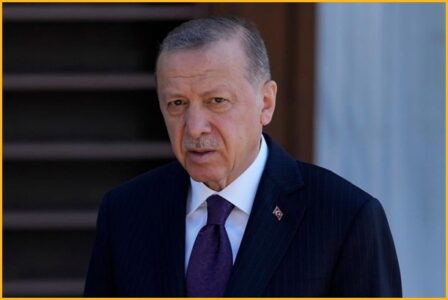
“Das wird erwartet”: Erdogan fordert Rückgabe besetzter Gebiete an Ukraine© Bereitgestellt von Berliner Zeitung
However, Ankara has in the past condemned the 2014 annexation of Crimea and has repeatedly called for respect for Ukraine’s sovereignty.
Turkish President Recep Tayyip Erdogan has once again called for the return of Russian-occupied territories to Ukraine. “Of course, if peace is to be established in Ukraine, the return of the occupied country will be really important. That is expected,” Erdogan said Monday night, Sept. 19, in an interview published by U.S. broadcaster PBS. “The occupied territories will be returned to Ukraine.” Similarly, the Crimea peninsula annexed by Russia should be returned to Ukraine.Earlier, he accused the West of “provocation” in the Ukraine war. Over the weekend, Erdogan said NATO country Turkey wanted to join the Shanghai Cooperation Organization (SCO), whose largest members are China and Russia.
Russian Federation loses grip on energy as means of pressure
Looking at current developments on energy market influence, it seems like the shore is turning. A number(of) developments and signals (mentioned below) point in this direction. Although it is too early to draw a far-reaching conclusion from this because it is directly linked to (erratic and sometimes unpredictable political) decision-making.
Kazakhstan
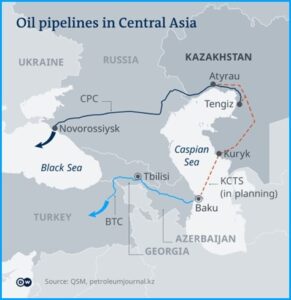 Kazakh oil seeks new routes to Europe because of Russia’s problems. Kazakhstan, one of the world’s largest oil exporters and an increasingly important supplier to Europe, wants to diversify its export routes after frequent terminal outages at Russia’s Black Sea port, Novorosiisk.
Kazakh oil seeks new routes to Europe because of Russia’s problems. Kazakhstan, one of the world’s largest oil exporters and an increasingly important supplier to Europe, wants to diversify its export routes after frequent terminal outages at Russia’s Black Sea port, Novorosiisk.
Kazakhstan and Azerbaijan are negotiating the possibilities of transporting Kazakh oil to Europe through the territory of Azerbaijan, the vice chairman of the board of directors of Kazakhstan’s national oil company KazMunayGas (KMG), Dauren Karabayev, said at a briefing on Aug. 25, according to a news report by Azerbaijani publication Trend.
Azerbaijan
Here choice has already been made and the pipeline is already largely operational that is banned with mainland Europe via Georgia and Turkey. Both Kazakhstan and Azerbaijan are both located on the Caspian Sea. Hence, the obvious thing to do is to align both export routes, a win-win situation.
Romania
Romania is largely self-sufficient, helping to supply its neighbors Ukraine and Moldova with gas, and wants to create additional space to do so permanently by connecting to the supply of gas from Azerbaijan, either directly through Georgia or the pipeline running through Turkey.
China
Initially, almost all Russian pipelines were aimed at Europe. An eastward shift could become costly and time-consuming for Moscow. As Europe will become less and less dependent on Russian gas, they are focusing their sights on China, via Mongolia or otherwise. These pipelines bear the names of Power of Siberia – 1 and Siberia – 2, respectively.
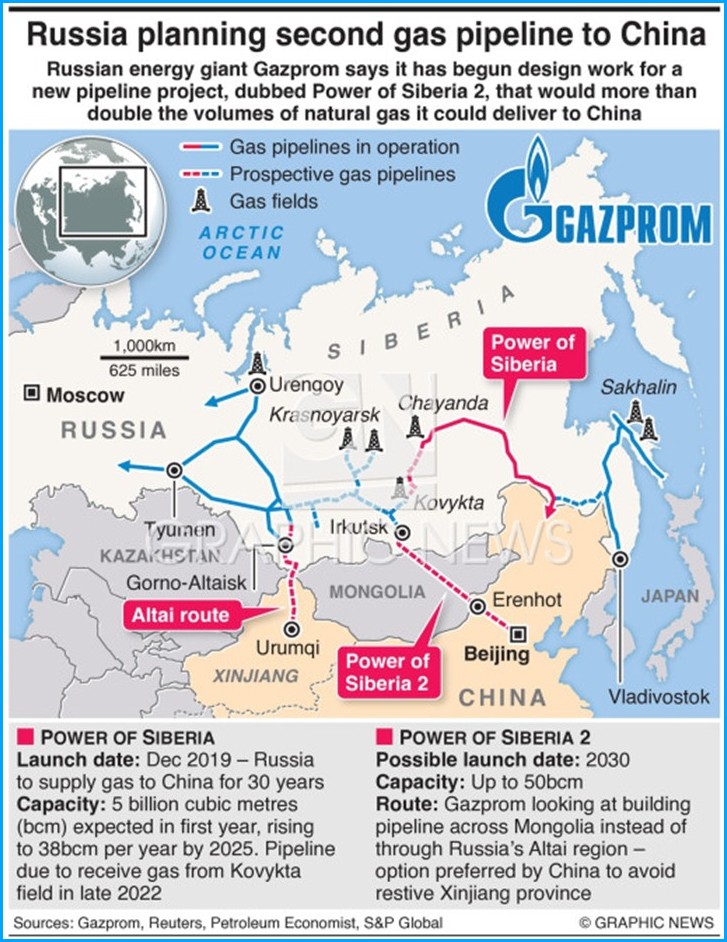
However, Communist Party leader Xi Jinping who is up for re-election next October has held off the boat for several reasons. and that is partly because China sources gas from various countries and therefore does not need as much Russian gas. In addition,and not least,because China is not expected to need additional gas until after 2030, according to industry experts. For the Russian Federation, it means that Asia for Russia cannot compensate for the loss of the European market, even if new pipelines come into Siberia.
PS After the production of this newsletter, we received the news about the large-scale gas leaks on Nord Stream 1 and 2 gas pipelines near the Danish island of Bornholm in the Baltic Sea and therefore we cannot report further on them at this stage.
Disclaimer

The newsletter of the Dutch Romanian Network is compiled with great care. The Dutch Romanian Network cannot accept any liability for a possible inaccuracy and/or incompleteness of the information provided herein, nor can any rights be derived from the content of the newsletter. The articles do not necessarily reflect the opinion of the board.
